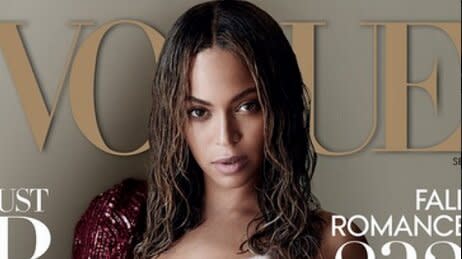Diversity is dominating this September's magazines. Finally.
- Oops!Something went wrong.Please try again later.

Despite recent attempts to diversify the overwhelmingly white fashion world — like the July 2008 issue of the Steven Meisel shot Vogue Italia, which exclusively featured Black models — the fashion and modeling industries continue to be predominantly, and more than a little disappointingly, white. Which is why the magazine covers on newsstands this September are so incredibly impactful and important.
This month, eight Black women are gracing some of the biggest magazines for women: including Serena Williams for New York, Keri Washington for Self, Ciara for Shape, Willow Smith for i-D, Amandla Stenberg for Dazed, and Beyoncé for American Vogue. It's a surprising and necessary step in combating and ultimately dismantling the racist hierarchies of the fashion industry and it's an encouraging sign that a change is afoot.
As you likely already know, September is the biggest month in fashion publishing; so mammoth and gargantuan in cultural relevance that director R.J. Cutler filmed a documentary titled The September Issue all about the importance of the annual Vogue issue in that very month. That's why it's particularly exciting to see so many high-profile mags using their most high-profile issues of the year to spotlight and showcase gorgeous diversity.
Black models, such as Naomi Campbell, Chanel Iman, and Jourdan Dunn, have long vocalized their frustration and dissatisfaction with racism and discrimination in the industry. Chanel Iman, a top model who has done both high fashion and commercial work, in addition to landing the covers of American and Teen Vogue, has never been afraid of calling out the obvious problems. When previously asked by Sunday Times Magazine if the fashion industry was racist, she said, "Yeah, most definitely. A few times I got excused by designers who told me 'we already found one black girl. We don't need you anymore.' I felt very discouraged. When someone tells you, 'we don't want you because we already have one of your kind, it's really sad." She's obviously ready for change and so are we.
This reversal of tradition on the covers of fall 2015 fashion magazines is unprecedented and something I didn't know I'd see in my lifetime.
Growing up in the Connecticut suburbs, I was "the only one," a common affliction of Black children in very white spaces: If I had to take a rough estimate, I'd say that the racial demographics of my elementary, middle, and high school years were 95% white. Besides the color of my skin, my hair was an easy target for aggressors and bullies. I hadn't yet learned how to take back the label of "I am Other." No matter what the racial insult, whether it be that I "wasn't black/black enough," or that I was ugly and unattractive for being black, going to public school taught me that Black was not beautiful — and there was not enough in the media around me that refuted that thought. I can only imagine the happiness I would have felt if I had gone to a magazine stand one month and seen women of color on the covers of all my favorite mags.
Significant change, the radical kind of change that is demanded of the fashion industry, may not be comfortable for all but it will be life-changing for many. I am thrilled to see the changing tides this September, and can only hope that the winds continue to blow in this most favorable direction.
We're loving this new campaign promoting body diversity
New York Fashion Week's diverse models are causing the best kind of stir
[Images via Twitter]
